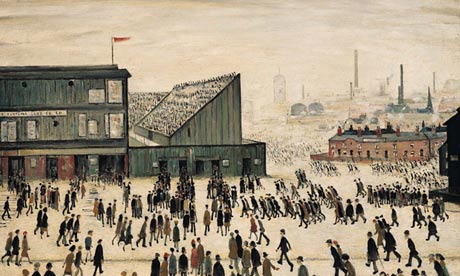
LS Lowry is a spectacular example of the mutability of artistic fortune. Only a few years ago, this painter of Britain in the industrial age was on his way to oblivion, invisible in national museums, his flame kept alive only by an arts centre named after him in Salford.
Now all is changed utterly. A terrible ugliness is reborn. Today the mighty search engine Google celebrates the dismal master's 125th birthday with a Google doodle: next year Tate Britain, criticised in the past for neglecting his work, will compensate with a grand exhibition called Lowry and the Painting of Modern Life.
Actually, the word might be overcompensate. Lowry deserves a place in art history, but let's not go nuts. He is not some British Van Gogh whose outsider genius transformed art. He is, however, an eerie documentarist of a vanished age in the life of our cities, and that is important. Lowry's naive or faux-naive eye caught the monotony and regimentation of people who seem reduced to "matchstalk men" by the brooding discipline of the factories that dwarf them.
If Joseph Wright of Derby caught the thrill of invention and energy at the birth of the industrial revolution in 18th-century Britain, Lowry saw the wan, de-energised, ashen routine of a landscape and a people shaped by smokestacks and mills. Wright painted the dream of industry, Lowry its dark human consequences.
That is why Lowry needs a permanent presence in our galleries: because art is a witness to history. As acts of witness, his paintings are the British equivalent of the photographs of Walker Evans that document America's great depression. Or if you prefer a literary parallel, he provides a visual equivalent of the journey to the heart of early 20th-century Britain that George Orwell describes in his book The Road to Wigan Pier.
The trouble is, the art world – that silly term says it all, as if art were another world – lacks a vocabulary to praise art for its historical and human significance. Art has to be praised as art, and artists glamorised as geniuses. So instead of giving Lowry his simple due as a witness to modern Britain, we have to call him a "painter of modern life", as if he were the equal of Manet. Why can't Lowry just be "the man who painted industrial Britain"? Because, I suppose, that would not be exciting enough to earn him a Google doodle.

